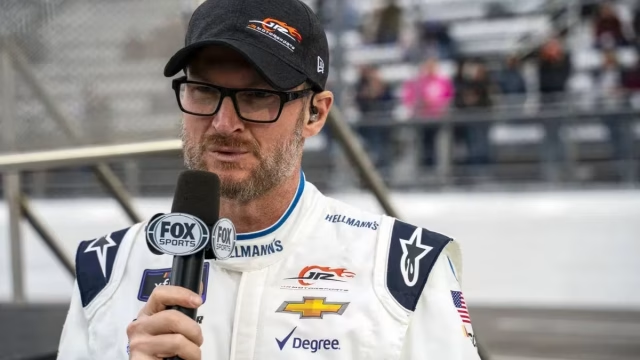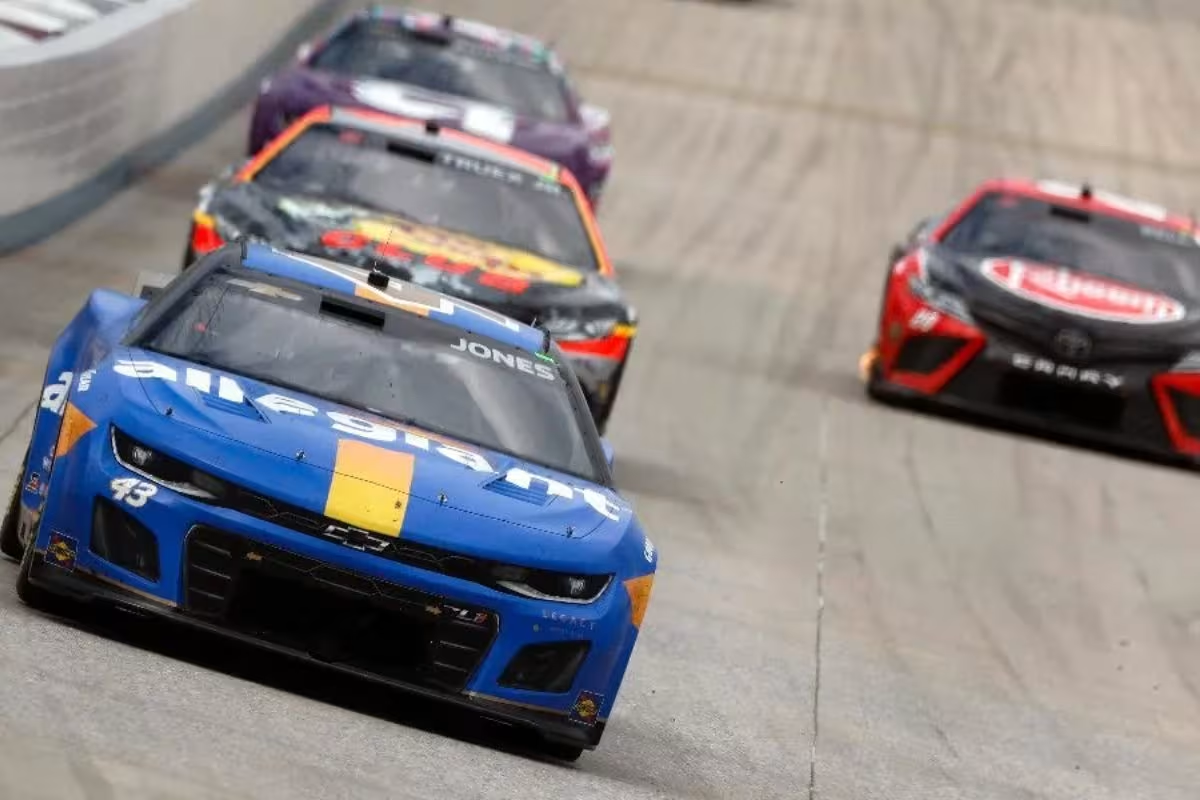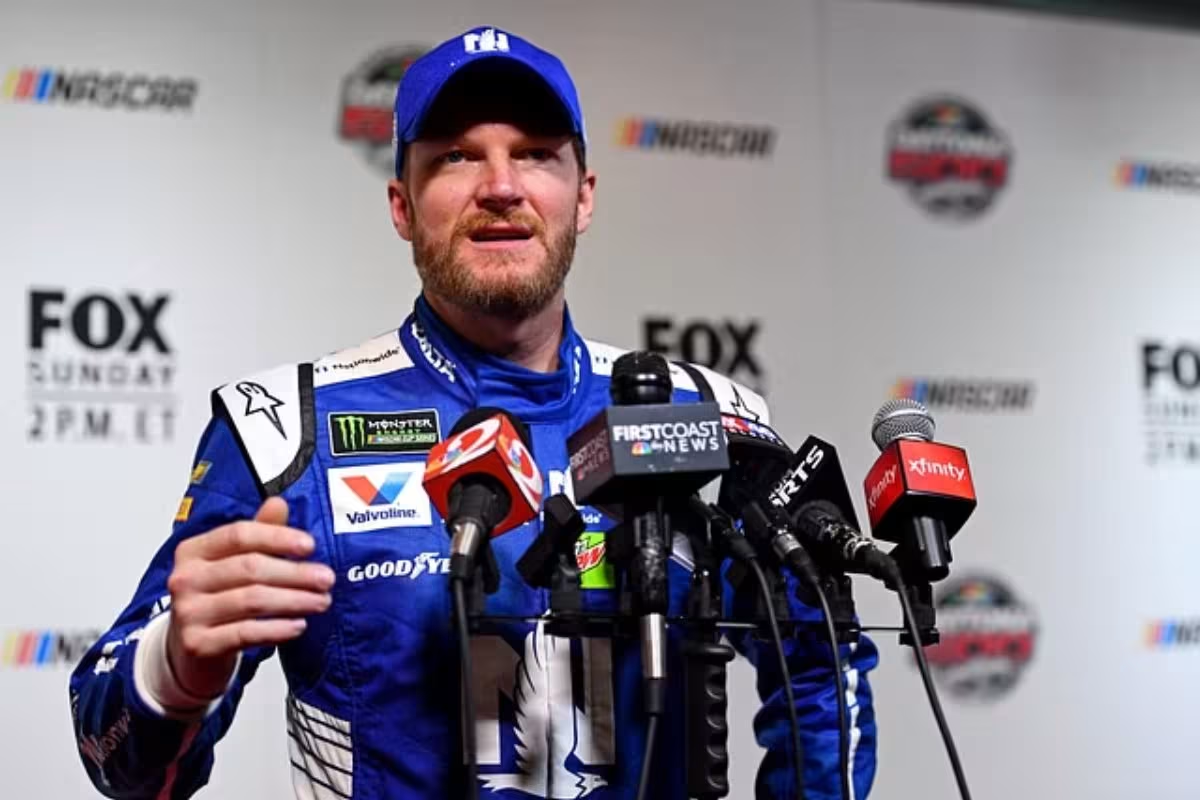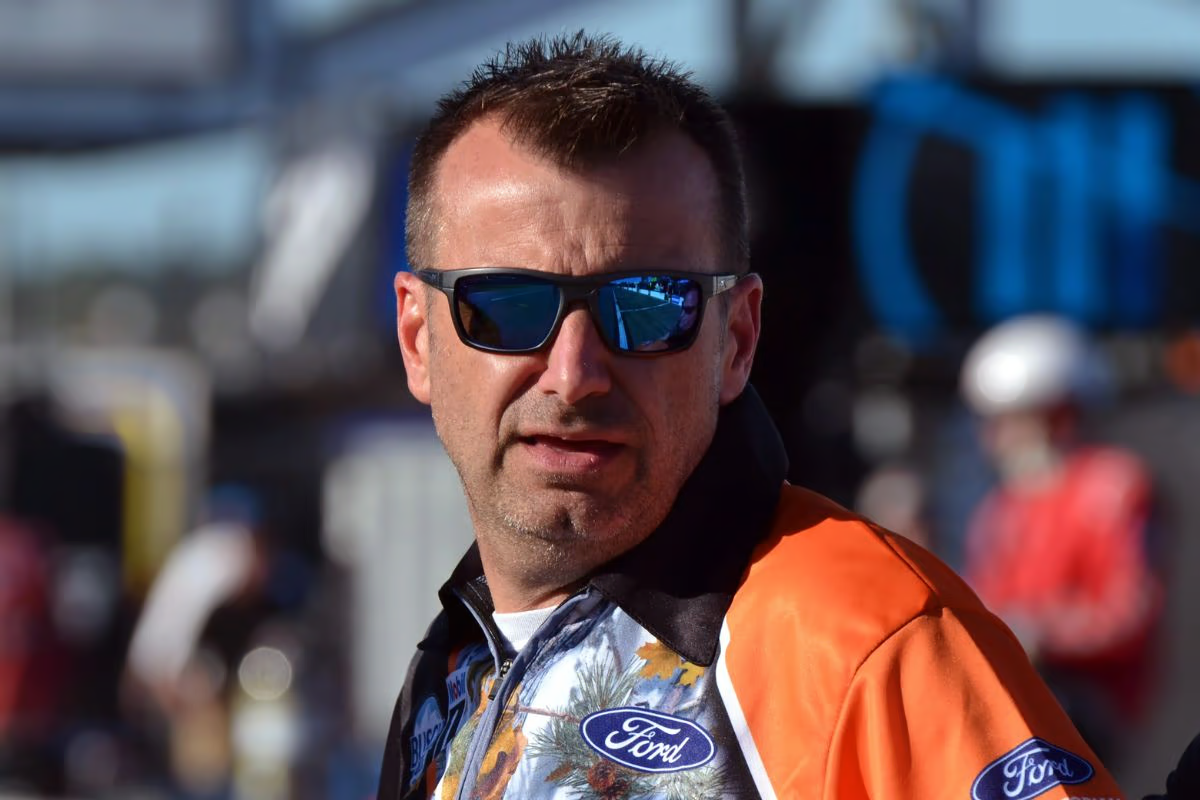NASCAR Wastes SHR’s 250K Dollars: Dale Earnhardt Jr.‘s recent criticisms of NASCAR’s penalty system following the Kansas race highlight a growing concern within the racing community regarding financial transparency and accountability. With Stewart-Haas Racing‘s substantial investment of $250,000 rendered ineffective by penalties, Earnhardt Jr. calls for a reevaluation of the existing rules that govern team performance and compliance. His emphasis on the need for clearer guidelines raises questions about the long-term implications for teams and the sport’s integrity.
Key Highlights
- Dale Jr. criticized NASCAR’s penalty system for undermining SHR’s $250,000 investment during the Kansas race.
- He emphasized the need for clearer guidelines to improve accountability in NASCAR’s decision-making process.
- The penalties rendered SHR’s significant financial investment ineffective, leading to frustration.
- Dale Jr. called for a reassessment of penalty applications to enhance fairness in competition.
- He highlighted the importance of transparency in NASCAR’s evaluations to prevent waste of resources.
The DVP Controversy
The DVP (Damage Vehicle Policy) has emerged as one of the most contentious regulations in NASCAR, particularly during the high-stakes playoff season. This policy, which mandates that a vehicle deemed undrivable must retire from the race, has drawn considerable ire from teams and fans similarly. The abrupt nature of this ruling has not only impacted the competitive dynamics of the playoffs but has also raised ethical questions about resource allocation and race fairness.
Recent incidents involving drivers Ryan Blaney and Josh Berry serve as poignant examples of the DVP’s consequences. Both drivers were forced to retire due to their cars being classified as undrivable, despite their teams’ confidence that repairs could be made during a pit stop. Such decisions, often made in the heat of competition, can render thousands of dollars in investment futile, leading to frustration among teams and disenchantment among fans.
The DVP’s implementation during critical playoff races reveals a fundamental tension between safety protocols and the competitive spirit of NASCAR. Teams invest considerable resources into their vehicles, and to be told that a race is over within moments can feel like a slap in the face.
As the series continues to evolve, the DVP highlights the need for a careful balance between ensuring driver safety and preserving the integrity of the competition. The conversation surrounding this policy is likely to intensify, particularly as stakeholders voice their concerns regarding the sustainability of such regulations in the future.
Brad Moran’s Stance on the DVP Rule
Amid growing discontent surrounding the Damage Vehicle Policy (DVP), Brad Moran, NASCAR’s Managing Director, remains resolute in his support for the existing regulations. Following the recent incident involving Josh Berry during the Kansas race, Moran emphasized that the rules remain unchanged, despite the heightened scrutiny they now face. He remarked, “The rule hasn’t changed, but it certainly can give a different view when it happens, and it’s unfortunate.” This statement reflects a commitment to the integrity of the DVP, even in consideration of potential criticisms from teams and drivers.
Moran’s position highlights a broader philosophy within NASCAR that prioritizes consistency and fairness. The DVP was initially instituted to mitigate safety risks and maintain competitive balance, and any modifications might undermine these foundational goals. By keeping the rules intact, NASCAR aims to foster a level playing field where teams and drivers can adapt to challenges without undue favoritism or ambiguity.
However, Moran’s steadfast stance does not negate the frustrations expressed by the racing community. With incidents like Berry’s igniting debate, the dialogue surrounding the DVP is likely to persist. While Moran acknowledges the unfortunate perceptions that arise during racing situations, his commitment to the rule signifies a reluctance to compromise on principles that govern the sport.
Dale Earnhardt Jr.’s Take on the DVP
Dale Earnhardt Jr. has emerged as a prominent voice in the ongoing debate surrounding NASCAR’s Damage Vehicle Policy (DVP), particularly in the context of the recent controversy involving Josh Berry. The incident has brought to light considerable concerns regarding the DVP, which effectively ends a race for any car that cannot return to the pit due to damage.
“There’s a lot of reasons why this vehicle policy is in place. But is it perfect? Maybe not. Would you have liked to have seen Josh Berry, or any guy in that situation, be able to put tires on his car and go back out there and finish the race? Yes!” – jr
Earnhardt Jr. articulated key points during his discussion on the Dale Jr. Download, emphasizing the need for a reevaluation of the policy. He acknowledged that while the DVP serves vital functions, it may not be flawless. His insights can be summarized in three primary considerations:
- Safety vs. Competitiveness: The DVP aims to guarantee safety by preventing damaged vehicles from competing. However, this may inadvertently penalize teams whose issues could be resolved with minimal effort, such as tire changes.
- Operational Limitations: Denny Hamlin highlighted the NextGen car’s design limitations, where flat tires render the vehicle immobile. This design flaw complicates the decision-making process regarding the DVP’s implementation.
- Potential for Reform: Earnhardt expressed a desire to see modifications that would allow drivers like Berry to return to the race, thereby enhancing the competitive spirit of NASCAR.
Earnhardt Jr. Advocates for Adjustments to the DVP
Often, discussions about NASCAR’s Damage Vehicle Policy (DVP) emphasize the need for a careful balance between safety and competitive integrity. Dale Earnhardt Jr., a seasoned figure in the racing community, has voiced concerns regarding the current implications of the DVP, particularly after witnessing the considerable investment teams make in preparing their cars for competition.
With estimates of up to $250,000 spent on a single race car, alongside extensive labor and logistical efforts, the stakes are undeniably high for teams that face early exits due to damage.
They did build a $250,000 race car roughly, with all the man hours in the shop. They hauled this thing halfway across the country, unloaded it, practiced, qualified, and raced. NASCAR definitely has to assist in giving the teams the ability to finish that race.” – jr
Is right now the time to change the damaged vehicle policy? 📝 pic.twitter.com/rqa6p56J1Z
— Dirty Mo Media (@DirtyMoMedia) October 1, 2024
Earnhardt Jr. stresses the necessity for NASCAR to reassess how the DVP is structured, suggesting that there are scenarios where damaged vehicles could still compete safely. His perspective, rooted in firsthand experience as both a driver and team owner, highlights a fundamental conflict: while safety is paramount, it should not come at the cost of competitive fairness.
“I’m hoping that in the offseason they’ll look at how they can adjust the policy without ruining the intent.” -jr
He acknowledges that the DVP serves a vital purpose in maintaining track safety, yet he advocates for a more subtle approach.
In his recent podcast, Earnhardt Jr. articulated a hope that the offseason will bring about thoughtful adjustments to the policy, ensuring that teams are not penalized for damage that does not greatly impair a car’s ability to race.
“No one wants the rule to go away. I just think we can use our heads here and say, ‘That car could have raced; it absolutely could have raced.’” – jr
While he recognizes potential pitfalls in modifying the DVP, his insights reflect a desire for a more equitable framework that balances safety with the competitive spirit of NASCAR, ultimately fostering a racing environment where teams can optimize their efforts and investments.
Rodney Childers’ Frustration with the DVP Implementation
Rodney Childers’ recent experience during the Kansas race highlights the ongoing concerns regarding the implementation of NASCAR’s Damage Vehicle Policy (DVP). After a Lap 1 incident involving Josh Berry and Erik Jones, Childers found himself emotionally charged and frustrated when NASCAR opted to retire Berry’s car despite minimal damage. The crew chief’s dismay stemmed from a series of perceived missteps within the DVP framework, raising critical questions about its efficacy.
“I’ve seen a lot of things over my 25 years in the Cup Series, but that’s the most screwed up thing I’ve ever seen or been involved with.”
“All we needed was tires with air in them. And how many times have we drug cars to the pit stall to put tires on them? Why today?!?”- Childers
Childers articulated three key frustrations regarding the DVP:
- Lack of Consistency: Childers emphasized that minor damage should not necessitate a car’s retirement, especially when similar situations have been managed differently in the past.
- Operational Inefficiency: He pointed out the absurdity of not allowing the team to make necessary repairs, such as replacing flat tires, which is a standard practice in the sport.
- Communication Breakdown: Childers attempted to engage with NASCAR officials during the incident, but his efforts were met with silence, leaving him feeling powerless and unheard.
Childers’ passionate remarks highlight the need for NASCAR to reevaluate its policies to guarantee that teams are not penalized disproportionately for situations that could be easily rectified. Such reevaluation is essential for maintaining the integrity of the sport while fostering a competitive environment.
News in Brief: NASCAR Wastes SHR’s 250K Dollars
The controversy surrounding NASCAR’s penalty system, particularly regarding the DVP rule, highlights considerable concerns about transparency and fairness in the sport. Dale Earnhardt Jr.’s criticism reflects a broader need for accountability in the decision-making processes that affect competitive integrity. By addressing these issues, NASCAR can improve trust among teams and stakeholders, ensuring that financial investments in performance are respected and valued. A reevaluation of the penalty framework could ultimately foster a more equitable racing environment.
ALSO READ: Dale Earnhardt Jr. Addresses NASCAR Rumors: Can He Race Again?



